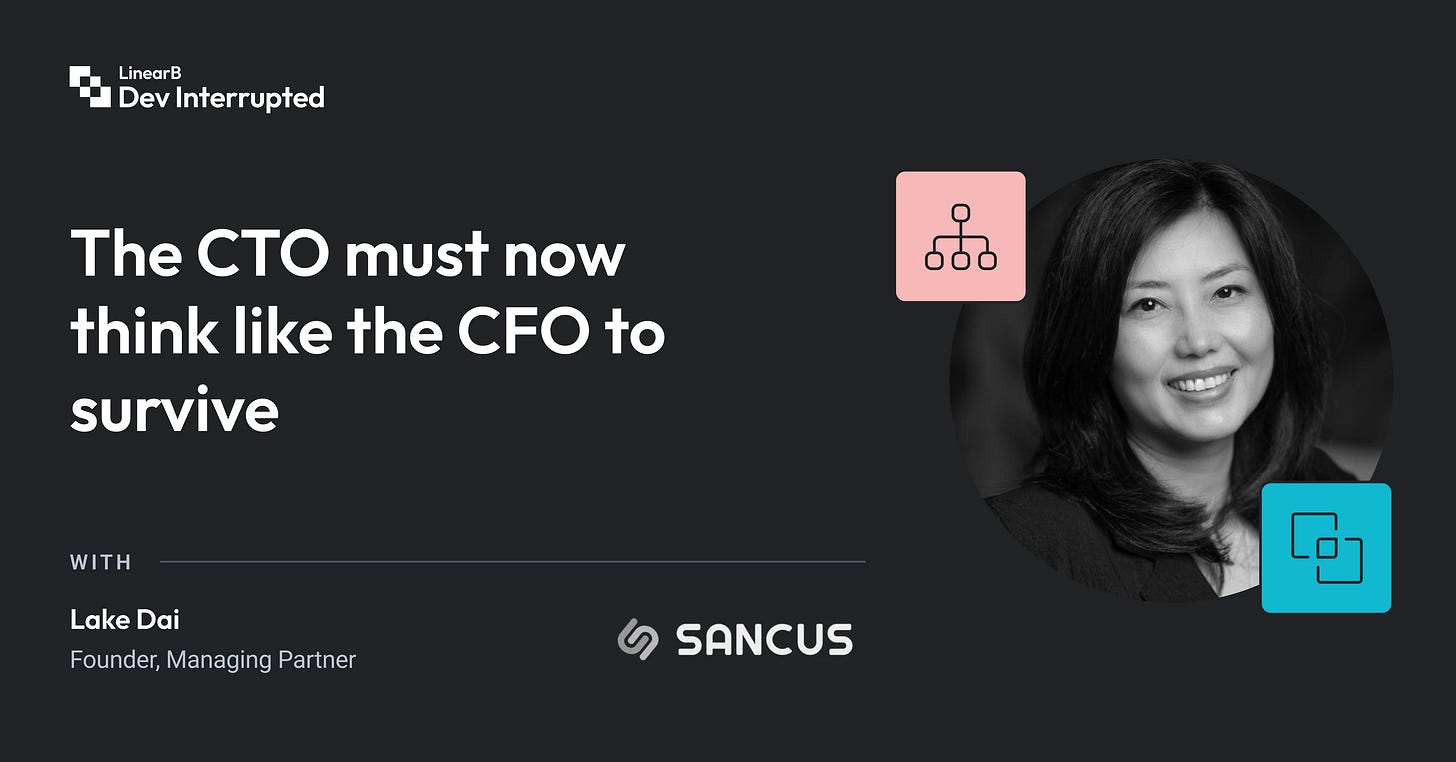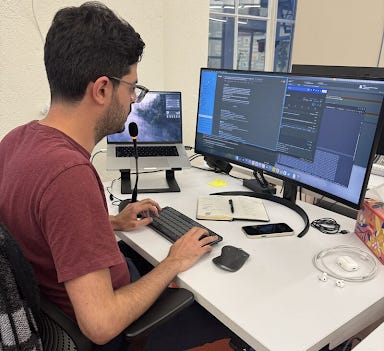The CTO must now think like the CFO to survive | Sancus Ventures’ Lake Dai
Plus: convening your AI council, whispering to your computer, and why tinkering builds taste
AI is forcing engineering leaders to become part-CFO, part-governance expert, and part-business strategist. Are you ready for the shift? We’re joined by Lake Dai, a globally recognized AI expert, professor at Carnegie Mellon, and founder of Sancus Ventures, to explore the new operating strategies required in an AI-first era. She explains why AI has evolved from a simple tool to a core business metric that leaders are held accountable for on earnings calls. This new reality introduces massive new compute costs—sometimes 30-50% of OpEx—forcing leaders to adopt the financial foresight of a CFO to forecast and justify spending.
Beyond the balance sheet, Lake identifies AI governance as the biggest blind spot for most leaders today, outlining the urgent need for an AI handbook to manage unit, system, and ethical risks. This strategic shift also reshapes the engineering org itself, from managing hybrid teams of humans and agents to the need for new training environments, almost like “AI flight simulators.” This episode is an essential briefing on these new complexities, all centered on Lake’s most urgent advice: in a world moving this fast, the best strategy is to slow down and focus on the fundamentals.
“In the AI-native SaaS companies... 30 to 50% of operating costs are compute cost. So think about it, if you’re engineer manager... your CFO is gonna ask you the question, ‘So how much are we gonna spend this quarter?’... Now, engineering leaders have to think from the lens as a CFO.”
The Download
Are you whispering to your IDE yet? 🗣️
1. Engineers are whispering to their computers and it’s working 🗣️
In a scene straight out of a sci-fi film, engineers at the Wispr Flow office in San Francisco are coding by whispering into their mics. This new trend, highlighted by
of the , shows engineers using voice-to-text technology in open offices without causing a cacophony. The revelation involves advanced LLM-powered VTT technology, a gooseneck microphone, and a cultural shift towards “whisper coding”. Could this be what finally gets us over our longstanding hesitance to talk to computers?2. The council of agents is here to help 🧙♂️
’s latest article explores the idea of simulating a council of agents to aid decision-making. Since engineering leaders face increasingly complex challenges, these agents (i.e. custom prompts designed to provide diverse perspectives) offer a new way to gather insights from expert voices. Turns out simulating an exec council is pretty effective for “auto-advising.” It’s the next logical step in using AI not to replace judgment, but to multiply it.Read: Councils of agents
3. Tinkering is the secret to developing taste 🔧
The art of tinkering is a crucial part of developing technical taste. An article on seated.ro argues that the ideal engineer is one who balances goal-oriented projects with those pursued just for fun. Remember: no time spent learning is wasted. It’s important to occasionally step back and let curiosity lead the way, as this approach not only keeps skills sharp but also fosters a deeper understanding of technology.
Read: If you don’t tinker, you don’t have taste
4. Measure what your AI is actually doing 📈
AI has changed how we build software, but faster code doesn’t always mean faster delivery. That’s why LinearB is launching the Essential toolkit for measuring and improving AI productivity. You get the new LinearB MCP Server, AI Insights dashboard, and Developer Surveys which are all designed to reveal how AI tools impact delivery speed, code quality, and developer experience. Stop guessing which AI tools work. Start leading with data. Visit LinearB to learn more and unlock the next chapter of AI productivity.
5. He invited the internet to message him through a receipt printer 🖨️
Speaking of tinkering: Andrew Schmelyun’s quirky project allowed strangers to send messages through a receipt printer connected to the internet, using a Raspberry Pi and a custom application in PHP to print messages submitted through a website form. While exposing a receipt printer to the wide open internet sounds potentially fraught, Andrew noted the overwhelmingly positive messages he received. (phew!)







